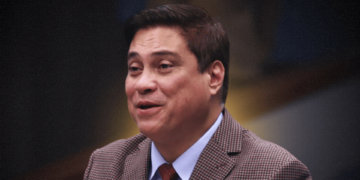A staggering 18.96 million Filipino junior and senior high school graduates in 2024 lack the ability to comprehend simple stories, according to the Philippine Statistics Authority’s (PSA) 2024 Functional Literacy, Education, and Mass Media Survey (FLEMMS).
Unveiled during a Senate basic education committee hearing, the findings have sparked urgent discussions about the state of Philippine education, a concern close to the hearts of conservative Filipinos who value knowledge, discipline, and national progress.
The PSA’s survey, conducted among 572,910 individuals from 177,656 households nationwide, redefined functional literacy in 2024 to include the ability to read, write, compute, and comprehend.
This stricter standard, a shift from the 2019 FLEMMS that considered high school completion sufficient, revealed that 21% of senior high school graduates—roughly one in five—are not functionally literate.
Senator Win Gatchalian, who presided over the hearing, expressed alarm that the education system allowed millions to graduate without mastering basic comprehension, a skill critical for personal and economic growth.
Education Secretary Sonny Angara responded by outlining plans to bolster critical thinking and ensure every learner achieves functional literacy, emphasizing reforms like the MATATAG K-10 curriculum, piloted in 2023–2024.
The data showed regional disparities: Metro Manila had the highest literacy rate at 82%, while the Bangsamoro Autonomous Region in Muslim Mindanao (BARMM) lagged at 62%.
Socioeconomic factors also played a role, with poorer households reporting lower literacy rates, though specific figures for Class E were not detailed in the PSA report.
For Filipinos, where education is a cornerstone of family and national pride, these findings hit hard. The 18.96 million figure underscores gaps in the K-12 system, particularly in fostering comprehension over rote learning.
Conservative values of hard work and accountability push for solutions that empower students, not just pass them through. The PSA’s revised criteria, while exposing flaws, aim to set a higher bar, aligning with the goal of producing globally competitive citizens.
As the nation eyes reforms, the focus is on equipping teachers, refining curricula, and addressing regional inequities. For young Filipinos, this is a call to demand an education that truly prepares them for life, ensuring the next generation carries forward the nation’s legacy of resilience and ambition.












